The ‘jingle’ may feel dated, but sound is still crucial to the way consumers perceive brands. How is sonic branding evolving in the modern media landscape?
The fmcg sector has produced some of the finest and most famous jingles of all time: For mash get Smash; Always the real thing; I feel like Chicken Tonight; If you like a lot of chocolate on your biscuit, join our Club; Washing machines live longer with Calgon. And fast food offers still more: I’m Lovin’ It (ba da ba ba ba); Did somebody say Just Eat?
As an advertising tool, they’re blisteringly effective. But while the jingle device worked – and still does – for radio ads and TV spots, “a static sound can no longer carry the weight of a modern brand experience in a world of apps, reels, podcasts, smart speakers and micro-content,” says Stephanie Dufrane, founder of Dutch sonic agency SoundBloom. “In this landscape, the holy Single Jingle – no matter how sticky – can’t do it all,” she adds.
So how is the jingle evolving? How are brands reckoning with the fact their audio signatures now need to exist, as Dufrane puts it, “across platforms, moments and moods”? And where could companies take their sonic branding in the future?
Creating earworms
The jingle has been around for close to a century. The first aired on Christmas Eve, 1926, for General Mills’ Wheaties. Production of the cereal had been planned to cease, until the ad led to a spike in sales wherever it aired. Before that, many brands would even distribute their jingles as sheet music within print ads.
“Jingles endure because they marry melody and lyric: you not only remember the tune, you remember the brand name or tagline embedded in it,” explains David Courtier-Dutton, CEO and co-founder of SoundOut, which works with the likes of Unilever, Diageo, Aldi and GSK to develop sonic brand identities. Indeed, half of the UK’s most memorable ad slogans are hummable.
“Jingles may be corny but they have an ability to create an earworm that humans cannot help but recall. As such they are hugely effective at increasing recall and salience,” Courtier-Dutton adds.
However, jingles have somewhat fallen out of favour. In 1998, the American Association of Advertising Agencies surveyed television commercials and counted 153 jingles in a sample of 1,279 national, 30-second ads (12%). By 2011, that had fallen to only eight original jingles out of 306 commercials (2.6%). The survey was discontinued.
There are exceptions. In 2023, Morrisons resurrected its ‘More Reasons to Shop at Morrisons’ ditty. And while Ocado last month dropped its ‘There’s an Ocado Just For You’ jingle and tagline after four years, in April Mentos revived its 1990s ‘Doo doo doo doo, doo-doo, doo-waah!’ jingle – but fully aware “it was a little cheesy”, this was a knowing throwback.
“The power of nostalgia is undeniable,” says Jen Redmond, mints category director at Perfetti Van Melle.
Over time, however, the jingle has in many cases been refined down to just a few notes or replaced by a non-melodic sound – better known as a sonic logo.
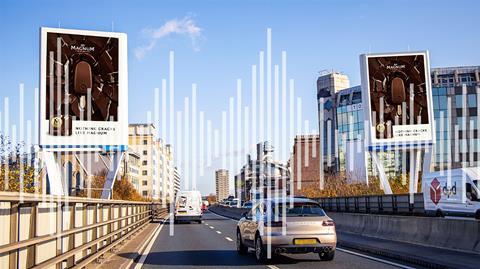
Sonic logos
The best are just as well known as the catchiest jingles. Netflix’s iconic ‘tudum’ (combining the sound of Bender’s wedding ring knocking on the side of his bedroom cabinet in House of Cards with a slowed-down clink on an anvil) or Coca-Cola’s pop and pour sound effect (not a recording of an actual Coke being poured but a recreation on a synthesiser by electronic pioneer Suzanne Ciani) are both iconic.
The latest was introduced just last month: Pepsi Lipton International launched a new global brand platform for Lipton Ice Tea featuring a “new sensory signature” it calls ‘The Lipting’. It combines a “distinctive ‘ting’ sound” with the visual of a raised little finger.
“The Lipting is a sonic device inspired by the ‘ting’ made by a teaspoon on a teacup,” explains April Adams-Redmond, global chief marketing officer, Pepsi Lipton. “It’s a device rooted in our tea heritage and signals the moment of mood lift, helping us build a strong, memorable and differentiated brand identity for Lipton Ice Tea in the minds of consumers.”
It works to “create a distinctive and repeatable new asset for the brand that goes beyond expected logo and category codes”, says James Cooney, creative director at Design Bridge and Partners, which created the sonic asset. “The Lipting will be popping up everywhere.”
The grocery sector has an advantage here, since products make a sound when they are consumed.
“The sound of a product doing its thing, like the Magnum crack, the Coke pour, or the Doritos crunch, taps straight into our lizard brains,” says Chris Camacho, CEO of Cheil UK. “It’s Pavlovian, yes, but also deeply sensory. It’s ASMR with a commercial purpose. These aren’t just ads. They’re audio cravings. If you can make someone salivate with a sound, you’ve already won.”
The ‘best audio brands’ in fmcg and food
Which brands are using sound most effectively? The below is a ranking of fmcg and food brands based on their use of music, sonic identity presence and sonic asset brand fit, combined with consumer and social media research, by sonic branding company AMP.
- Old Spice 50.0
- Burger King 46.6
- Just Eat 44.0
- Popeyes 41.6
- Little Caesars 38.5
- Ricola 34.7
- Febreze 27.1
- Nescafé 26.5
- Colgate 22.5
- Pilsner Urquell 22.1
- Coca-Cola 21.5
- Oreo 19.5
- Avocados Mexico 18.7
- Modelo 18.2
- Aldi 16.0
- Dairy Queen 15.7
- KFC 15.0
- Pepsi 14.8
- Dove 14.7
- Bounty 14.6
- McDonald’s 14.1
- Campbell’s 12.8
- Panera Bread 12.2
- Tostitos 11.7
- Arby’s 10.8
Source: AMP, 2024
In March, Magnum put this to the test, launching a “multisensory” ad campaign that broadcasts the “unmistakable sound of its signature chocolate crack” to digital car radios when they pass billboards promoting the ice cream. “We wanted to ensure consumers don’t just see Magnum’s quality but hear it too,” says Natasha Irwin, Unilever account director at media agency Mindshare UK.
The sound doesn’t even have to be all that appetising. Last year, Pot Noodle used insight showing “how eating the savoury snack is not always the most dignified experience” within a campaign called ‘Slurp’.
“We call them ‘earworms’ because they burrow into our consciousness,” says Al Young, joint chief creative officer at St Luke’s, which created Ocado’s jingle. “They may irritate us, but in the clamour for attention today, whether it’s a jingle, a song, or simply a distinctive sound, sonic branding works.”
As a result, says Camacho, “audio has become a frontline asset in the battle for attention and memory. In an oversaturated, swipe-happy world, sound might just be the last sense still capable of cutting through the noise. They embed. They persist. They haunt. And that’s exactly the point. If your brand isn’t living rent-free in someone’s head, it’s nowhere.”
Social media’s role in sonic branding
Social media has further elevated the need for sonic branding. There’s been a “clear shift toward brevity and distinctiveness in sonic branding”, says Ed East, global CEO and co-founder of influencer marketing agency Billion Dollar Boy. “This aligns with how audiences are consuming content – fast, mobile, and on-the-go.”
Even when ‘watching’ TV, viewers have “a phone in their hand, they’re scrolling, chatting, or double-screening. The visual message may be missed entirely, but if your brand has a distinctive audio cue – a jingle, a sonic logo, or even a voice – it can still cut through.”
It helps that the majority of YouTube and TikTok users leave sound on when using the platforms (77% and 62% respectively), found research by EssenceMediacom. And while a smaller proportion of Instagram users do, 80% of Instagram Reels are viewed with sound on. Across all platforms, 57% of those surveyed have shared content because of the audio.
“The right sounds becomes a call to action, an identity, and an emotional lever all in one”
Chris Camacho, Cheil UK
Users scroll quickly, giving brands just seconds – or less – to grab attention. “Sound-on platforms have reignited the importance of sonic branding, because you’ve got 0.3 seconds to trigger a reaction,” says Camacho. “Music, brand mnemonics, even ambient tones are now performance drivers. The right sound becomes a call to action, an identity, and an emotional lever all in one.”
On socials, sound becomes “your brand tags for micro-moments”, says Paul Reynolds, SVP, global creative services at MassiveMusic. “You don’t stand much chance of being recognised on TikTok unless you have a solid sonic hook you use consistently.”
But social media requires more nuance than slapping a sonic logo on the end of every post.
“Fmcg brands really want their content to seem like it’s not an ad at all,” says Luke Moseley of sonic branding agency Hear Me Out, which has worked with Tesco, Robinsons and Netflix. “If you’re shown a piece of content and at the end the logo comes up and there’s a sonic logo attached to it, that’s then structured like a TV commercial and is quite clearly an ad.”
This need for subtlety, plus the ever-growing number of channels on which a brand may be present, is giving rise to a new way of thinking about sonic branding.
Read more:
-
How sizzling and slurping are dividing food marketing
-
Magnum billboard ads ‘crack’ on passing motorists’ radios
“The next evolution isn’t about tweaking a tune but about building a living, breathing audio ecosystem,” says Dufrane. “In practice, that means building a recognisable sound identity not through one-off jingles or a single sonic logo, but through a layered set of audio elements – textures, rhythms, instruments, tones and chords – that recur and evolve across all brand touchpoints. Think Daft Punk or James Blake: each track may be different, but there’s a consistent sound blueprint that makes it undeniably theirs.”
Brands today need “depth, emotion, and coherence across touchpoints”, adds Laurent Cochini, global MD of sonic branding agency Sixième Son, which has worked with Carrefour, Haribo and Babybel.
“Catchy jingles can work in the short term – especially in mass advertising – but brands today need more. I don’t believe in the jingle as a standalone solution,” he says.
What’s needed is what Cochini calls “sonic systems: living, adaptive frameworks where each sound plays a role – not just to be remembered, but to express something real.”
This means a “core sonic DNA adapts fluidly across touchpoints – from short-form video to in-store experiences and mobile apps – ensuring cohesion without repetition”, he explains. “Why this shift? Because attention is scarce, screens are saturated, and emotion is the new currency of brand value.”
UK’s all-time most memorable ad slogans
- Every little helps - Tesco
- Just do it - Nike
- I’m lovin’ it - McDonald’s
- Beanz meanz Heinz - Heinz
- Autoglass repair Autoglass replace - Autoglass
- For mash get Smash - Smash
- Washing machines live longer with Calgon - Calgon
- Should’ve gone to Specsavers - Specsavers
- The best a man can get - Gillette
- More reasons to shop at Morrisons - Morrisons
Source: 2025 Advertising Standards Authority survey conducted by YouGov
Sound is the glue that holds campaigns together
Consistency is crucial. “People think of sonic branding as a sonic logo. But we consider it as any time a brand uses sound, absolutely anywhere,” says Moseley. “If a brand does an ad campaign in spring, then they put one out in autumn with a different song and it’s a completely different vibe and atmosphere – that’s wasted marketing budget.
“It’s like a brand using completely different colours and fonts because it should be something different – you’d say that’s completely mental.”
A sonic system – Dufrane calls it an “audio biotope” – gives a brand audio consistency and adaptability. The jingle and sonic logo, then, moves “from starring role to supporting cast”, Dufrane says.
This could be, for example, a long-form brand track from which elements can be sliced and diced depending on what’s needed for the context it will be heard in.
AB InBev – with MassiveMusic and branding agency Jones Knowles Ritchie – last year developed an “adaptable music palette” for Leffe beer. It features bells, organ swells, and a choir – from which ad soundtracks and a sonic logo have been drawn. Named ‘The Sound of Monastic Divinity’, it captures the same reverb heard within the original Leffe Abbey, created by recording the acoustics of a bursting balloon on location.
“Sonic identities don’t need to be minimal, clinical…and forgettable,” says Reynolds. “You can still have loads of fun with a brand’s ‘sonic palette’. A flexible and adaptable identity allows a brand to convey different emotions – perfect when you’re a multichannel communicator.”
More than ever, sonic branding is a key weapon in brands’ armoury for convincing consumers to buy. Even if they’re not fully aware of it. “That’s the trick,” says Dufrane. “Sonic branding is the puppet master you didn’t know was pulling strings in your brain.”
The rise of retail media has given brands greater prominence within the supermarket walls, in the form of floor vinyls, digital screens, hanging signage, branded bays, and special one-off installations. But what if shelf barkers could literally ‘woof’?
“Traditionally, the retail environment has been viewed primarily as a conversion space but with little focus on audio as a persuasive tool,” says Georgina Holledge, business director at SMG’s agency Capture, which works with the likes of BrewDog, McCain, Organix and Häagen-Dazs. “The idea of an aisle ‘talking’ to shoppers has often felt out of place.”
But perhaps not for much longer. Data from SMG finds advertising on retailer in-store radio delivers an average ROI of £4.94 per brand during campaign and post-campaign periods.
“This suggests a significant, often overlooked opportunity: to use sound subliminally in-store to influence shopper behaviour – especially when paired with a promotion or competition mechanic,” Holledge says.
Music piped into stores is proven to boost sales. A 2023 study by the University of Bath found when music was played at a Swedish supermarket chain in Stockholm, it increased shopper basket sizes by more than 10%.
“If your brand isn’t living rent-free in someone’s head, it’s nowhere”
Chris Camacho, Cheil UK
And it gets even more granular. A 1999 University of Leicester study at an East Midlands supermarket found that when Bierkeller brass band music was piped from speakers alongside a wine display, German wines outsold French. But when French accordion music was played, the opposite was true. Shoppers remained oblivious to how they’d been subconsciously influenced.
Could a brand-specific sonic blast or broader piped-in ambience drive an even more targeted boost?
The Magnum ‘crack’ is “proof that sound alone can evoke powerful sensory cravings. By tapping into the emotional memory of eating an ice cream, these cues can influence impulse decision-making. For indulgent or treat-driven categories, deploying these sonic cues at shelf level could help spark incremental purchases that weren’t planned,” Holledge says.
On this front, supermarkets “have barely scratched the surface”, says Camacho.
“Imagine smart shelves that use directional audio to trigger sound logos as you walk past,” he says. “It’s coming, and whoever gets there first owns the soundscape of the store.”
There is, after all, no better place to trigger a Pavlovian response in consumers to desire an ice cream than the freezer aisle.
“However, without complementary visual cues, audio triggers alone risk confusing rather than inspiring the shopper. To succeed, sonic branding in retail must be cohesively integrated with the overall brand experience – visually and contextually – to guide the shopper naturally toward action,” Holledge says.
Brands need to be wary that while visual branding makes crystal clear which brand is being communicated, with audio – short of stating the brand name – things aren’t always quite as clear.

Magnum’s crack “is beautifully produced” says Cochini, “but it might promote the category more than the brand. It makes you want a chocolate-coated ice cream, not necessarily a Magnum. It’s effective in triggering appetite, but does it build long-term equity?”
John Treacy, executive creative director at brand activation agency Zeal, disagrees, given the strength of association between the crunch and Magnum.
“Would the sound of a Magnum crunch being played as I opened the ice cream freezer door sway me away from an own-label cheaper option? It might just do,” he says. “The opportunity for supermarkets is huge. While nobody wants a cacophony of competing sound effects when you’re struggling to get the weekly shop done, sonic branding used sparingly and executed in an entertaining and relevant way offers brands the opportunity to gain standout in a cluttered and busy environment.”
Reynolds agrees. “Supermarkets are a huge playground for new, smart user experience sonics,” he says.
But just as the ever-expanding advertising surface for brand ads in stores is increasingly overbearing to some, applying sound to the retail environment does risk brands becoming perceived as obnoxious: the brand equivalent of blaring a Bluetooth speaker on a train.
“The idea of bringing sonic branding into supermarket aisles is tempting, but just because we can make products talk doesn’t mean we should,” Cochini argues. “In a high-stimulus environment like retail, sound can quickly shift from signal to noise. If every brand tries to outshout the next, the result isn’t impact – it’s irritation. As sound designers, we have a responsibility not to become audio spammers. Our ears don’t have eyelids.”
In the coming years, brands are likely to face “more channels, more complexity” Cochini adds. It requires a greater need for “coherence and emotion” After all, “tools may change, formats may change. But the need to sound like yourself? That’s not going anywhere.”
When jingles become songs
In 2023, Gillette’s The Best a Man Can Get jingle – first aired in the 1980s – was made into a full song and re-recorded by singer Tom Grennan (left). Last year, after fans called for a release, it became a single.
Grennan’s take on the tune ultimately didn’t trouble the charts much, but the whole experience did mean – as he told the Big Issue – he could pay off his parents’ mortgage. And crucially, says Billion Dollar Boy’s Ed East, it “turned a branded song into a cultural moment”.
Just Eat has also turned its jingle into original songs – tapping the talent and popularity of Snoop Dogg, Katy Perry, Christina Aguilera and Latto, among others.
These examples are part of a long history of jingles turned full songs. There’s Coca-Cola’s I’d Like to Teach the World to Sing or Brutus Jeans’ Jeans On. Music To Watch Girls By and We’ve Only Just Begun both have ad jingle origins, too.
According to Kantar, 84% of the ads it tests globally have music. Analysis by Amp finds that brands using custom or owned music – where the advertiser owns the copyright – achieve a 33% higher incremental ad recall among consumers than those relying on stock music.
Airlifting a popular tune into an ad can be hugely effective, of course – take Cadbury’s drumming gorilla playing along to In the Air Tonight. But it comes with risk. The artist might become infamous, or the song might be licensed by another brand.
But when brands compose a new track, they “have created a musical asset that’s not only memorable, but memeable”, says East. “Creators riff on it, consumers parody it, and suddenly a branded message is living far beyond its original format.”




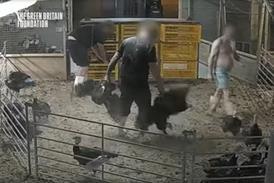

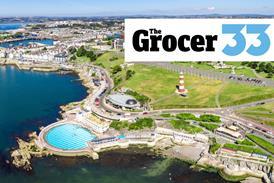
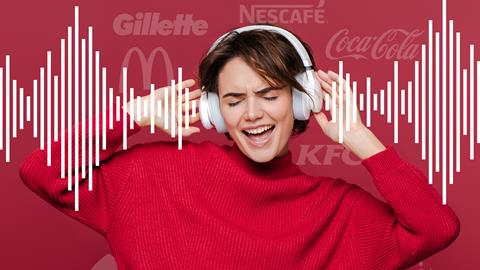
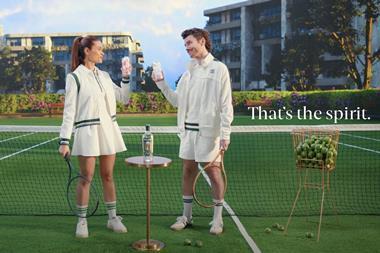


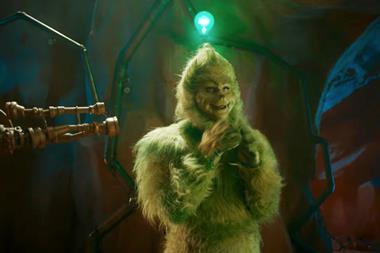

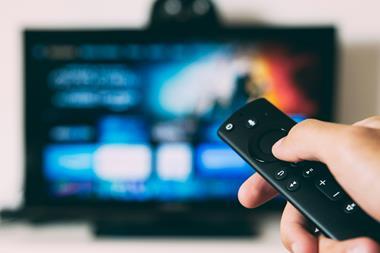




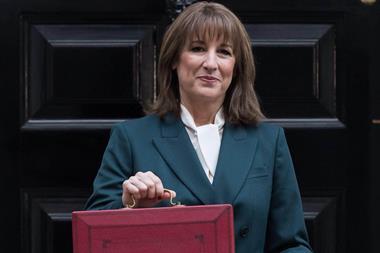
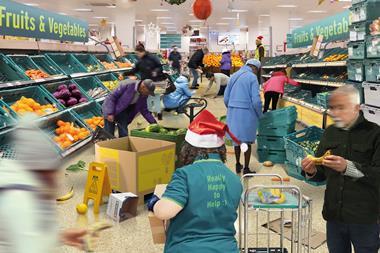
No comments yet